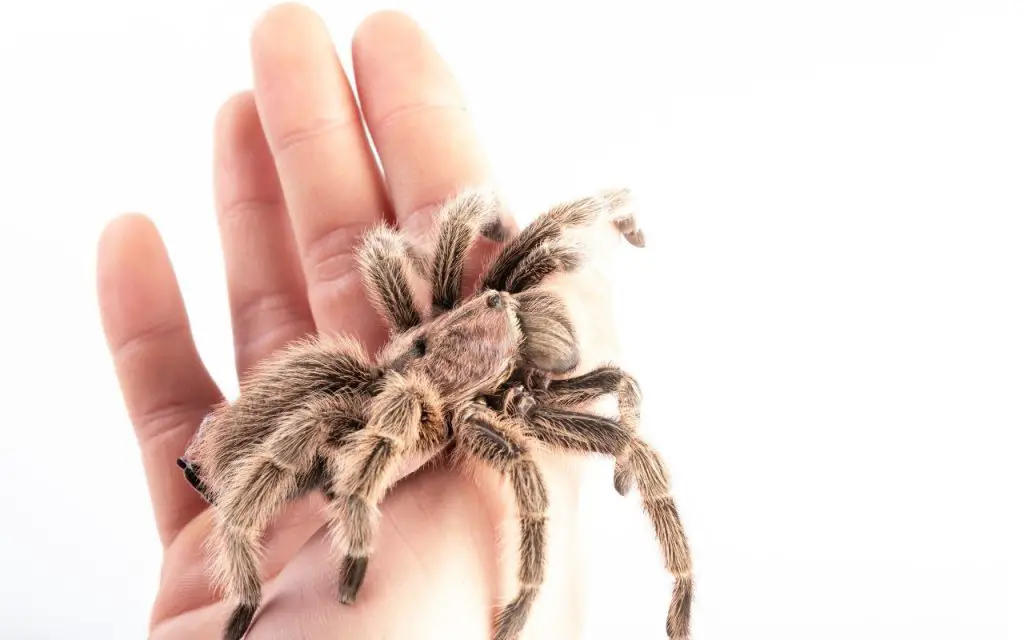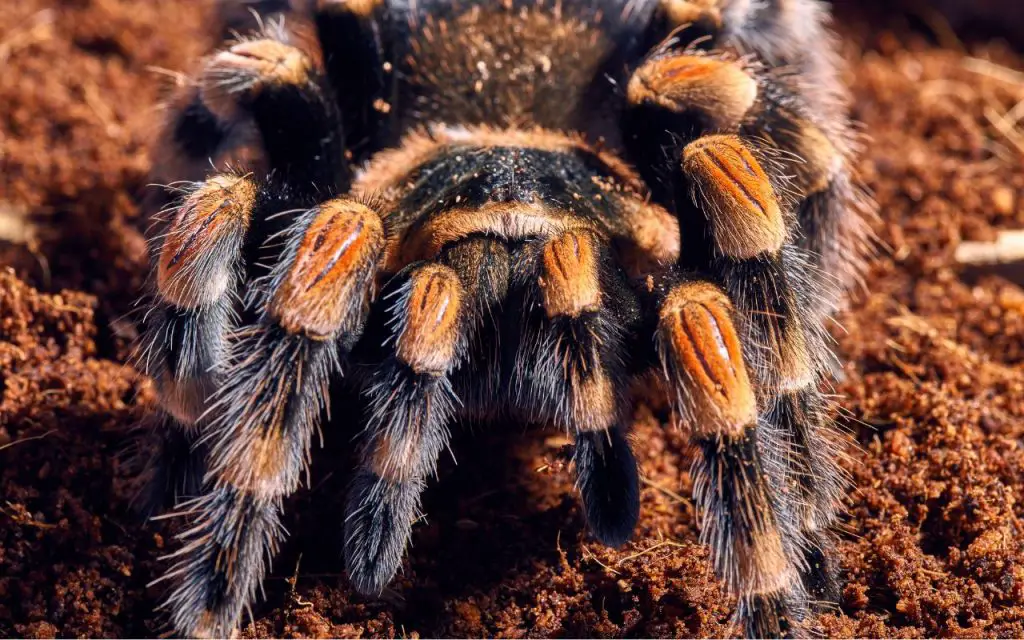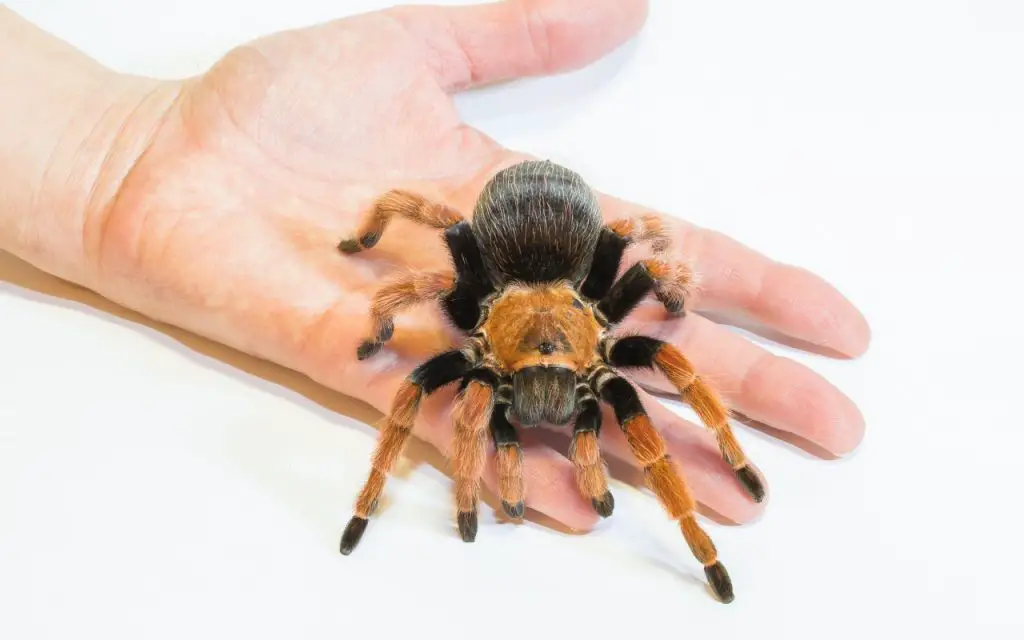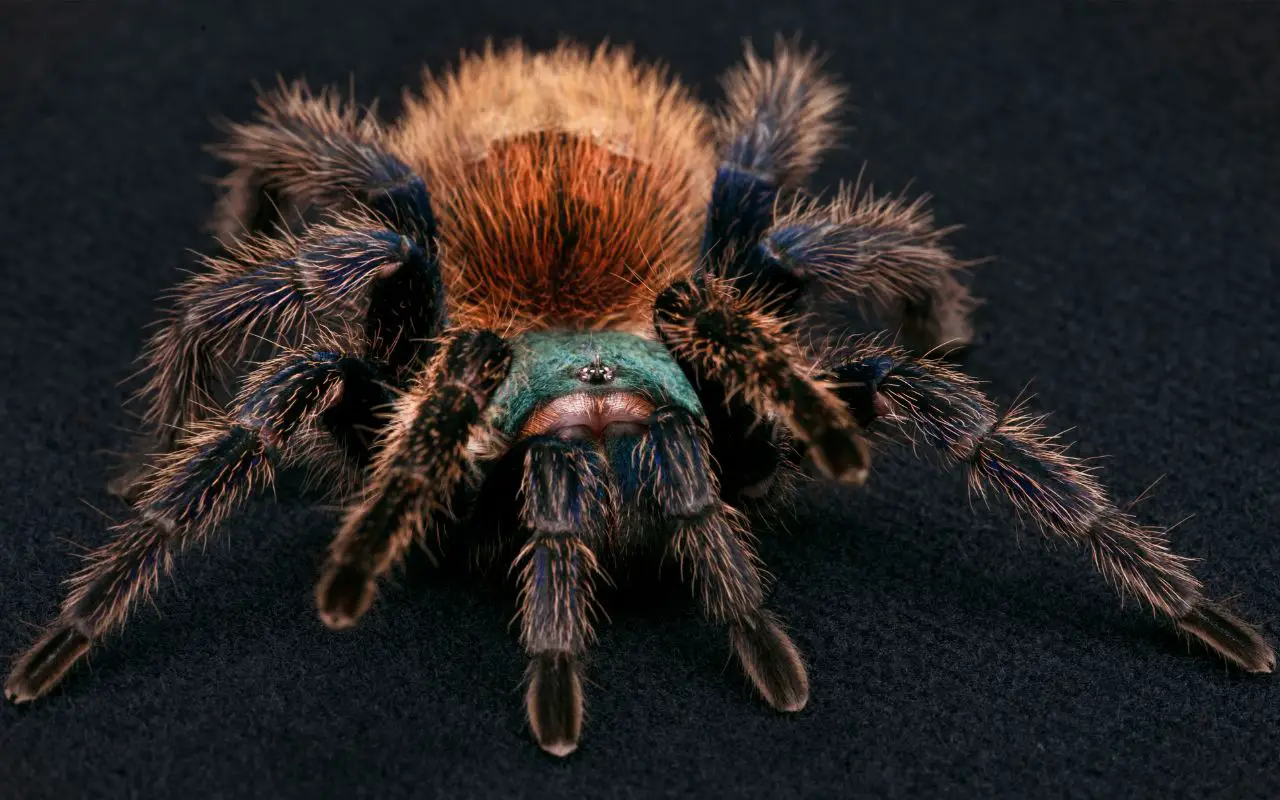Last updated on February 1st, 2023 at 10:10 am
If you’re new to arachnids, you may ask: is a tarantula a good pet? The answer is a definite yes – if you get their care right! Let’s go over their requirements to learn more…
Getting a Tarantula For a Pet
If you’re interested in getting a tarantula for a pet, you’ve come to the right place. We’ll talk about which species of tarantula is best for your needs, how long they live, and what kind of food they prefer.
After that, read on for information on how to care for your new pet. Then, make the final decision! Whether you want a tarantula to watch hunt and eat bugs, or just want a very unusual pet, there are many different types available for sale.
Pet tarantula food
As an adult, a tarantula will eat almost anything, but there are some species that prefer certain foods over others. It is best to feed your pet what it would normally eat in the wild.
The most common food source is crickets, which you can purchase at pet stores. These foods are available in several colors and can be dusted with supplements for an extra boost. Regardless of which type of food you choose, be sure to provide enough to meet the nutritional needs of your pet.
When choosing pet tarantula food, remember that size does matter. Smaller feeders should be kept to a minimum, and bigger ones should be left out to avoid overfeeding. Also, make sure the food your pet tarantula eats is high-quality and fresh. You can always buy prey items online, but make sure to do some research on the brands and care conditions of your chosen food.
Some of the best foods for tarantulas include:
- crickets
- mealworms
- hornworms
- super worms (Zoophobas)
- locusts

Pet tarantula for sale
If you are thinking of purchasing a tarantula for your home, you should know about the various species available. The Brazilian Black Tarantula is an excellent choice for a first tarantula as it is relatively docile and possesses a silky black color.
This species is also a favorite among expert tarantula keepers, due to its low maintenance requirements. Its price range is about sixty to one hundred dollars. The Arizona Blonde Tarantula, which is a native of the deserts of Arizona and southwestern United States, is another great choice for a first pet. This species is also low-maintenance, and it usually lives for several years without requiring extensive maintenance.
The Stripe-Knee Tarantula is an extremely interesting pet, but it is best not to handle them too often. A fall can cause great injury to the animal. Be careful when handling it and never drop it from a high place. Tarantulas are sensitive to falls, so be careful handling is essential. Despite this, Stripe-Knees are generally easy to care for.
Pet tarantula lifespan
The life span of a pet tarantula depends on the species. While male tarantulas can live as long as 18 months, females can live up to thirty years. These lifespan estimates are based on observations in captivity. If you plan on owning a tarantula, you should know how to care for it so it will not become a nuisance. Here are some basic care tips for your tarantula.
When choosing a tarantula species, consider the lifespan. Many tarantulas have a lifespan of about a year. Male tarantulas have larger pedipalps and a tarsal spur. Males cruise for females for a year, and then die. Females are much less active, though.
Although tarantulas are fairly hardy and easy to care for, you should be prepared to spend some time caring for them. Remember to keep their enclosure clean. And be sure to feed them regularly. They should be kept in a dark place as the bright light of the room will stress them out.

Pet tarantula species
The Chilean Rose Hair Tarantula is the most popular pet tarantula species. It’s docile, easy to care for, and can live up to twenty years. The species can be found in pet stores or online for less than $20. Chilean Rose Hair Tarantulas are 4-5 inches long and can live up to fifteen years. While females live for longer than males, they are a little skittish and can bite if they are in their territory.
Although many tarantulas are happy in rooms with a reasonable temperature, other tarantulas need more heat and humidity. Arboreal tarantulas, for example, require a 10-gallon vertical tank. Because they spin their webs up high, you need a tank with a side opening. The tank should also have a log or live plant to provide cover. Aside from a tank, an arboreal tarantula also needs a water dish, which should be cleaned daily.
Some of the most popular beginner tarantulas include:
- Chilean Rose
- Costa Rican Zebra
- Texas Blonde
- Mexican Red Knee
- Mexican Red Leg
Some species, like the Gooty Saphire, are not recommended for beginners, so always do your research before buying!
Do pet tarantulas bite?
While some tarantulas are docile enough to hold and be handled, others can be aggressive and even bite. If you’re wondering if you should get a tarantula as a pet, you should keep in mind that you need to make sure you’re prepared for this. Before handling a tarantula, make sure you’re wearing protective gloves if you feel nervous. It’s always a good idea to look at the pros and cons of getting a spider, and a possible bite is one of them!
When threatened, tarantulas often raise their front legs to show their fangs. This makes them look much larger and more threatening, though a bite is usually unlikely. When disturbed, a tarantula will also scratch their abdomen to kick hairs at you. They release their hair quickly and cause severe irritation. While a pet tarantula may be very quiet and harmless, they may still kick urticating hairs.
Tarantulas are not dangerous for humans, but they are dangerous for other animals. The venom they inject is enough to kill some animals. They don’t generally sting humans, but their bites will itch like a bee sting. If you’re unsure about whether your pet tarantula is dangerous, don’t handle it.
You can read more about bites here.

Heating
Heating a pet tarantula can be challenging. Not only do you need to heat the tank but you’ll also need to provide your tarantula with a water dish. A large shallow water dish is ideal for most species of tarantulas, as it raises humidity in the habitat.
Choose a dish that is no wider than your pet’s leg span and about 1/2″ to 1″ deep. In addition, you’ll want to place pebbles at the bottom of the dish, as it keeps crickets from drowning. Avoid using sponges for your tarantula tank, as they contain harmful bacteria and mold.
For a long-term effect, keep your tarantula’s temperature at the recommended range for its species. You can also supplement heat mats with heat lamps, which regulate temperature and last longer than the average heating mat.
Heating mats should not be used as sole heating means, but rather as an additional heat source. You can also add heating rocks, heat pads, or other materials to the tank. Hot spots can kill your tarantula so use a thermostat or check temps with an infrared thermometer gun.
Water
In many countries, normal tap water is safe to give your tarantula. If you have any doubts, however, you should provide water in a bottle or filter it with reverse osmosis. Although it may seem counterintuitive, water in the wrong quality can be harmful to tarantulas. If you have a doubt about the water quality of your local tap water, it’s best to purchase a bottled water that is chlorine free.
The proper humidity level for your tarantula is around forty to fifty percent. The exact level will vary from species to species. To keep humidity levels optimal, hydrate one corner of the tank at a time. You can also use a hygrometer to ensure the humidity level is right for your pet tarantula. Make sure your tarantula is properly hydrated to avoid the risk of dehydration or underfeeding.
You should never put water directly in the cage for tarantulas. Their bodies contain enough moisture to last for many days without drinking. However, high-quality water bowls are recommended for tarantulas to maintain a healthy humidity level in their enclosure.

Enclosure
When it comes to selecting a tarantula enclosure, quality is key. Whether you choose to purchase a cheap plastic enclosure or invest in a high-end model, quality is crucial. There are many reasons to choose a higher-quality enclosure for your pet. Here are some things to consider:
First, make sure that you have the space available for the tarantula. The size and shape of the enclosure should be adequate for the species you are considering. You should aim to make the enclosure as spacious as possible. This should include plenty of hiding space and access to water and food. If you’d like to decorate the enclosure a bit more, it’s okay to use a variety of items and colors. Just keep in mind that too much decoration can damage your tarantula’s webbing.
Make sure the substrate is moist enough to support the tarantula’s growth. While potting soil is acceptable for tarantulas, you should try to choose a special blend of organic substrate materials to prevent bacteria and mold growth. The substrate should be at least three inches thick. The bottom layer should be covered with eco-earth or similar products. In order to make the substrate moister, you can make a misting enclosure.







